“Money is the center of the conflict in the Ertzaintza, because they want to take away some privileges”
- Aitor Iturregi was uncompromising and entrepreneurial and, having overcome the flooding of the input, has constantly denounced the militarized character of the Ertzaintza. It claims another police model.

What is the real reason behind the Ertzainas protests?
It's clearly money, because they take away some of the privileges they've had so far. In other words, they will reduce diets and supplements.
They received a diet of 300 euros when ETA existed. In the last twelve years the political situation has changed. However, this supplement is included in the EUR 1,100 salary increase that they themselves demand.
It is true that since the Interior Minister, Rodolfo Ares, has not signed the agreement and during these years have made cuts and modifications to the Rescue Group. They are now also trying to make the Mobile Brigade, and that unit is strong.
In addition, the concern of the Mobile Brigade precedes the death of one of its members in San Mamés in February 2018. The question is, what was an ertzaina doing that did not meet the physical requirements in that unit? Why didn't your medical report happen? He suffered a heart attack from his physical effort and is an important date in the chronology of this conflict.
The SIPE trade union is linked to the Mobile Brigade, and former members of this organization started the Indar movement.
What is SIPE?
It is a separate union of UGT. There is a lot of talk about solidarity with Jusapol, but it is not so much said that there is no union class in the Ertzaintza, only the corporations. There is only ELA and it is a minority, it has only four representatives and that is why it is not on the negotiating table. ESAN emerged from ELA, the current second trade union force with 20 representatives in the Ertzaintza and EUSPEL, with 10 representatives, who won the headquarters of the Mobile Brigade, Arkaute and Iurreta. However, it is an organisation linked to Berrozieta.
These two unions, ESAN and EUSPEL, were divided into the Estella-Garazi agreement by ELA, which signed that political agreement. CCOO has also disappeared and the force majeure, with 22 representatives, ERNE, started as an Abertzale and critical union and is now an absolutely corporate organization.
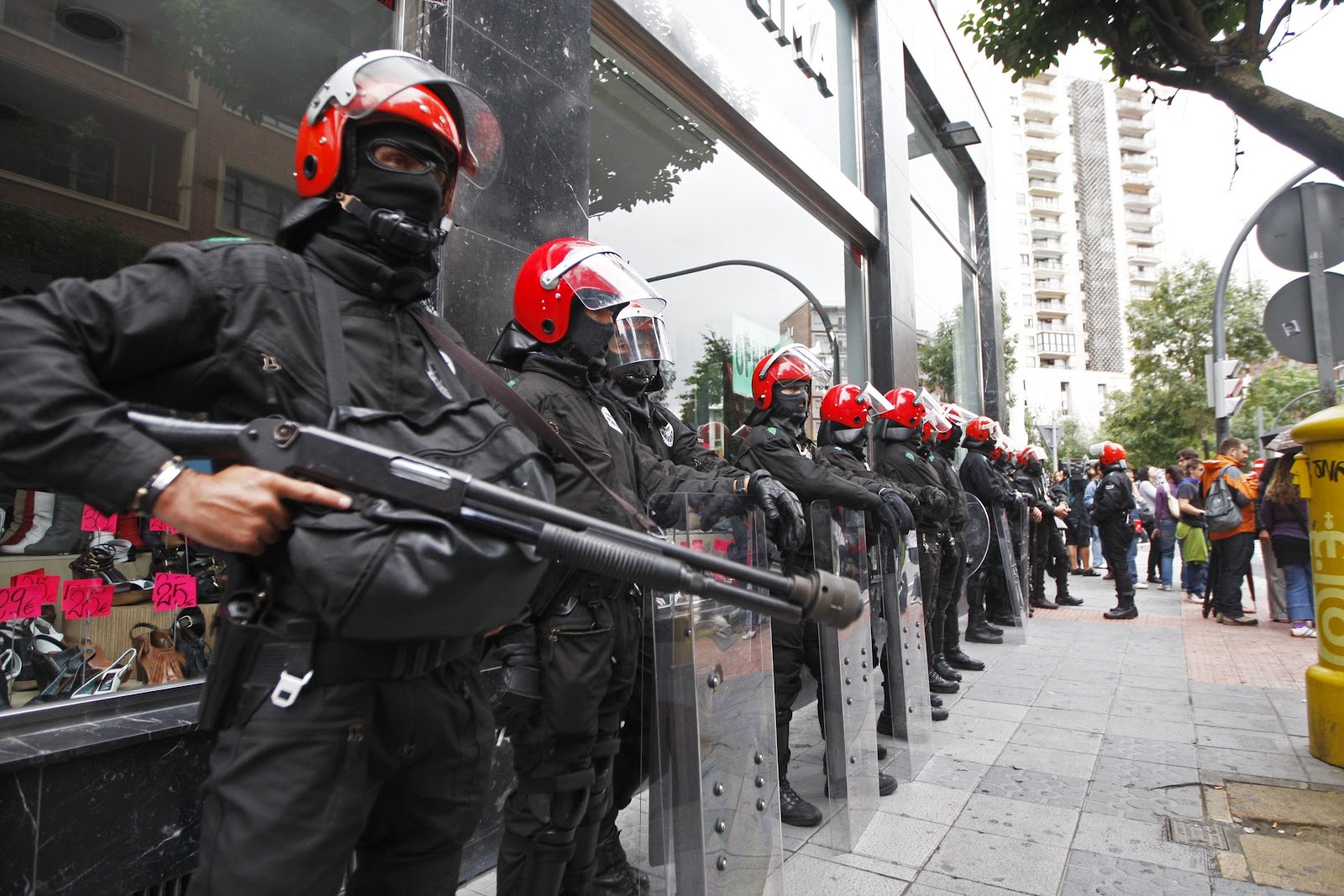
What is the role of the Mobile Brigade in the Ertzaintza?
Riot control unit. Unlike Berroziak, they're not elite, but it's a strong unit in the Ertzaintza. It's an important part of the police. For example, when an ertzaina leaves Arkaute Academy, he is trained for 18 months. Three of them are the Mobile Brigade. There are 584 agents, but the Rescue Unit is within this section.
They charge more than other units and have a different work schedule. This is one of the main causes of the conflict. They want to change the work schedule.
They now work in cycles of 16 weeks, nine and a half weeks of bookkeeping and six and a half weeks of barracks. It's a fully militarized unit. That cannot be called into question.
The case of the Berrozas is similar, hence EUSPEL is the only union that supports the Ertzaintza with Indar. EUSPEL is linked to Berrozieta and they have noticed that if changes are made in the Mobile Brigade they will be next.
Is the Basque Government nervous because material demands can pass on to the police model?
Every time there has been a problem with the Ertzaintza, the Government has solved it by providing prebends. Ertzainas have privileges from the very beginning. For example, for any public work, they require the candidate to have a higher degree before the opposition, but not to be an ertzaina. Moreover, the linguistic profile in Basque is not necessary. Once the opposition has been overcome, they become level officials C1 or C2. They are also entitled to retire at the age of 60, which we do not have.
They charge for ordinary overtime between EUR 21 and EUR 26, night overtime between EUR 23 and EUR 28, holiday overtime between EUR 24 and EUR 29 and overtime between EUR 25 and EUR 30. That's the average, with the highest level, that gets the most money.
These privileges came because they created a police force linked to the political conflict, but that is over. Now that the political situation has changed, there are allowances and allowances that cannot be paid and do not want to give up. Night shifts or overtime will not charge the same amount and will not give a diet to bodyguards for clothing purchases, for example.
All this is being withdrawn. After the cuts in education and in Osakidetza, the time has come for the jewel of the crown, the Ertzaintza.
Was the use of certain weapons also not among the privileges?
Yes, all ertzainas could use rubber balls to control people who were previously “conflictive”. The doctrine of the Ertzaintza was to maintain a safe distance with the demonstrators and balls they used to do so. This, in turn, allowed them to face mass protests with few agents using great violence.
This change did not take place until the death of Iñigo Cabacas, but the Ertzainas protested because they did not want the ban to throw rubber balls. The truth is that there has been no ban on balls, there are units where the use of this material, such as the Mobile Brigade, is limited, but yet the Ertzaintza was against. And we must not forget that they still have that possibility if we receive the right order from a leader. The fact is that before the murder of Iñigo Cabacas, any ertzaina had the competence to throw rubber balls.
In any case, neither the Department of Security, its Advisor, nor the Basque Government, nor the PNV, nor any party that supports the PNV in power want to have a debate on the security model that is needed in the CAV. Entering this debate would mean recognising that they created an organisation that has lagged behind, and that has happened because decisions have not been right and proper.
On the other hand, the European Union advises that there should be one police per 500 inhabitants and here the number of police officers exceeds it, only with the Ertzaintza. The local police, the Civil Guard and the Spanish police should be added.
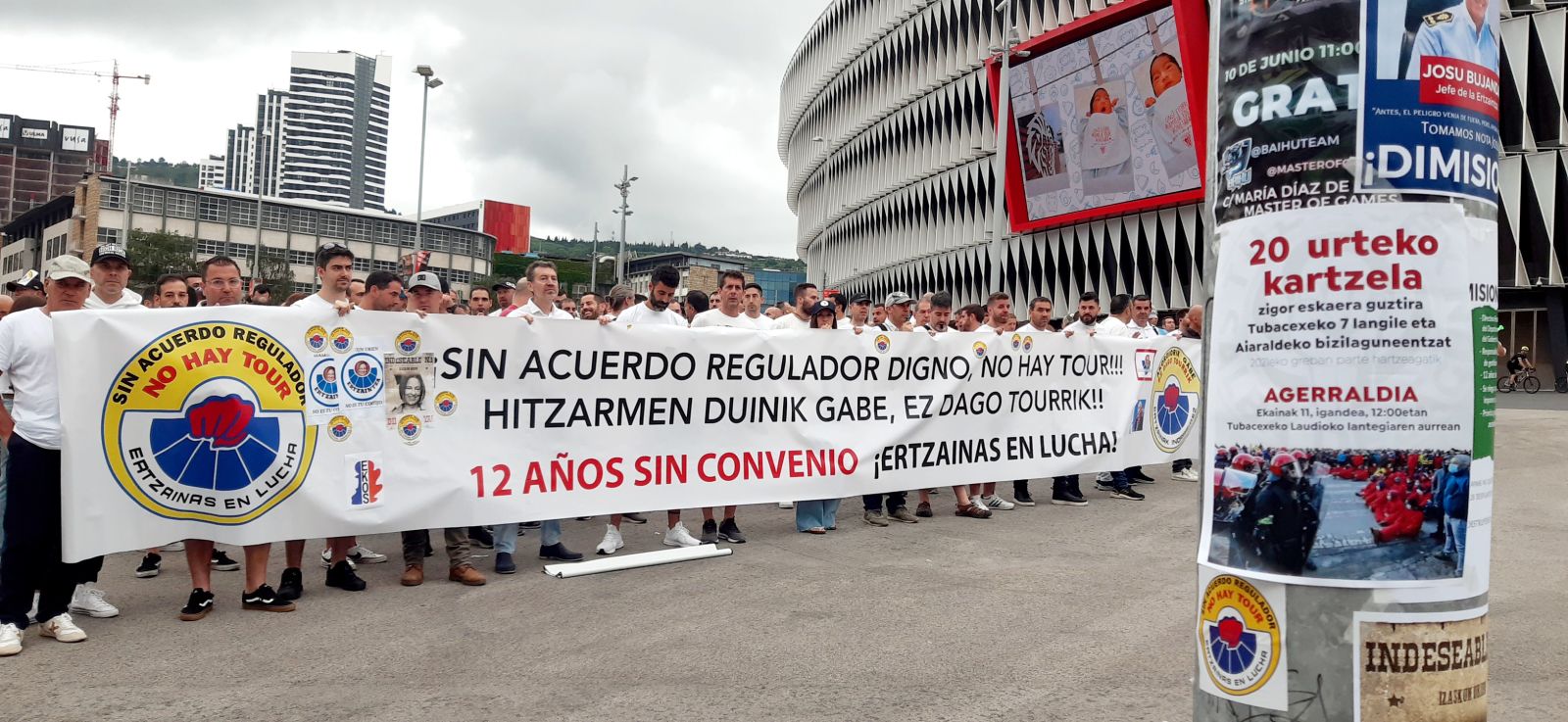
The Basque Government has reported that behind the protests there are several Spanish right-wing forces, what is its opinion?
It is an attempt to divert attention. Basically, conflict is money. The Ertzaines say that they want to equate their working conditions with the municipal police, but what police? An ertzaina has just left the academy charges EUR 2,700 a month. The deductions will be EUR 500 or 600, increasing the daily allowance, etc. EUR 38.000 per year for a basic scale ertzaina. Later.
For example, when Javier Balza was an Interior Minister, he said that the Ertzaintza was the police that charged the most, and in 2018 the Spanish Police and the Civil Guard stated that in San Sebastian they charged 600 euros less a month than the Ertzainas.
What are the axes of the debate on the police model?
Firstly, the police model cannot be based solely on police criteria, but on conflict prevention, solidarity relations and social justice. Subsequently, it is necessary to establish internal and external mechanisms for controlling police activity, which do not exist in the Ertzaintza. In the murder of Iñigo Cabacas proved that he is not. Everything remained in the hands of the Ertzaintza and we saw that the police station in Deusto did not monitor the use of weapons and there was no external commission to analyze what happened. There was an internal commission, but as the case came to the court, it suspended its activity, leaving all responsibility to the Prosecutor’s Office.
There must be external and internal commissions, otherwise it will repeat what happened with Iñigo Cabacas, long weapons that did not belong to private individuals, but to groups or units, but which did not include in the registration book the agent who used the weapons, if ammunition was used... They cleaned everything up and never knew anything. These control measures are not real.
Another axis is the modification of techniques and tactics, that is, the transformation of the academic base and, finally, the modification of the police organization.
What do you mean by technique and tactic?
In other countries, more advanced in this area, police training takes two or three years, here nine months. What does this mean? That the copy of the Spanish Police is the police model of the Ertzaintza, which is the duration of the course of the Ávila police academy. In Canada, for example, before receiving three years and seven months of training, the three-year upper baccalaureate level must be exceeded.
Anyone with basic studies in the CAPV can prepare the opposition and once it is overcome, enter Arkaute.
Are there many police models?
We know some. Zero tolerance is from the Civil Guard. The traditional model is that of the Spanish Police and the Ertzaintza, although the Ertzaintza acts with another problem-solving model. Because sometimes they behave like local policemen from small towns. In addition, there is a proximity model that is used in the UK and a Québec community model.
By the way, I would like to point out that with the Basque Police Act now all Municipal Police officers receive training in Arkaute and that complaints have increased. Before, the municipal police were more independent because it was in the hands of the municipalities.
This change has taken place because the Basque Government wants to transform Arkaute, from the police factory to the security academy. That is why they have also made an opposition from fire fighters, with broken powders, and they also want to receive training from ambulance drivers.
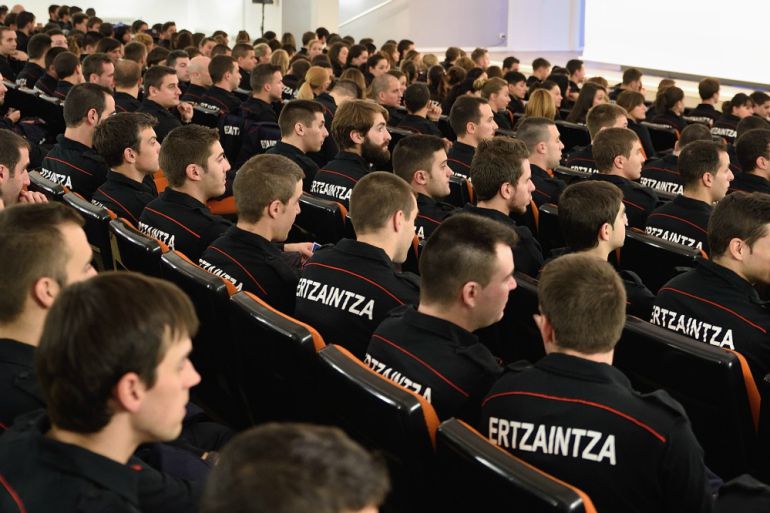
You attach great importance to the Arkaute Academy.
It is clear that to transform the police model, the academic base must be changed. Arkaute’s base is the model of 40 years ago, and even if they are being updated, the roots have not changed.
For example, the development of the Community model in Québec should change radically, but not only that. In fact, the community needs instruments to monitor its activity for police control. It is not the responsibility of the government or the counsellor, but of an independent commission.
The Community model means that agents know society and the community. They should meet with civil society. Because security is not only police competence, but also includes health services, social welfare, etc. All this has to be done, otherwise the police will only respond to crimes, without addressing radical problems.
Following this model, what should the Ertzaintza change?
Firstly, it is not close. It is impossible, because to do so you have to know the community and that means meeting and relating with the agents of the neighborhood, society or education. In the culture of the Ertzaintza it seems that they are the enemies, which is the result of the academic training they receive.
For the Ertzaines, we citizens are civilians and they are in another category. They think they're above, but the worst thing is they teach them through privileges that exist above society. For example, in Vitoria-Gasteiz they have been allowed to cut the tram for two hours, which has not allowed anyone. Another caste, the one above the citizens, has certain privileges and forgets that we citizens pay them.
Azken astean ezagutarazi moduan, Eusko Jaurlaritzaren Balorazio Batzordeak txosten banatan aitortu ditu estatuaren biktima gisa. Justizia sailburuak ekitaldi pribatu banatan entregatu dizkie dokumentuak.
Rosa Zarra Ertzaintzaren pilotakada baten ondorioz hil zela da Eusko Jaurlaritzako Poliziaren Biktimen Balorazio Batzordeak atera duen ondorioa, Berria-k jakinarazi duenez. Orain arte, Ertzaintzak beti egin dio uko bertsio horri, eta Rosa Zarra berak zuen gaixotasunaren ondorioz... [+]
Ustez, lokalaren jabetza eskuratu dutenek bidali dituzte sarrailagileak sarraila aldatzera; Ertzaintzak babestuta aritu dira hori egiten. Birundak epaiketa bat irabazi du duela gutxi.
Ertzaintzak martxoaren 13an Bilbon zauritutako bi pertsonaren testigantza jaso ditugu. Athleticen partidaren ostean larriki zauritu zituzten aita-semeak, borra-kolpeka, eta atxilo eraman zuten haietako bat. Furgonetatik ikusi zuen ertzainek nola egin zuten tiro jendearen kontra,... [+]
ERNE, ESAN eta SIPErekin egin du akordioa Eusko Jaurlaritzak 2025-2028 aldirako. Besteak beste, urteko soldatan 4.200 euro gordineko igoera "graduala" izango du ertzain bakoitzak. Sindikatuen iturriek El Diario Vascori azaldu diotenez, akordioarekin Ertzaintza Espainiako... [+]
49 urte eta gero Espainiako Poliziak Gasteizko Maria Sortzez Garbiaren katedralean eraildako bost langileak oroitu dituzte beste behin astelehen arratsaldean. Milaka pertsona batu dira Zaramagatik abiatutako eta katedralean amaitutako manifestazioan. Manifestari guztiek ez dute... [+]
31 urteko emakume kolonbiarra osasun zentrora eraman ordez ertzain etxera eramatean agenteek "akatsa" egin zutela aitortu du Segurtasun sailburuak, baina azpimarratu du ez zuela "jipoirik" jaso.
Karen Daniela Ágredok dioenez, zortzi bat ordu eman zituen ziegako zoruan etzanda Ertzaintzak ospitalera eraman aurretik. Segurtasun sailburu Bingen Zupiriak berak eskatu du Eusko Legebiltzarrean agerraldia egitea.








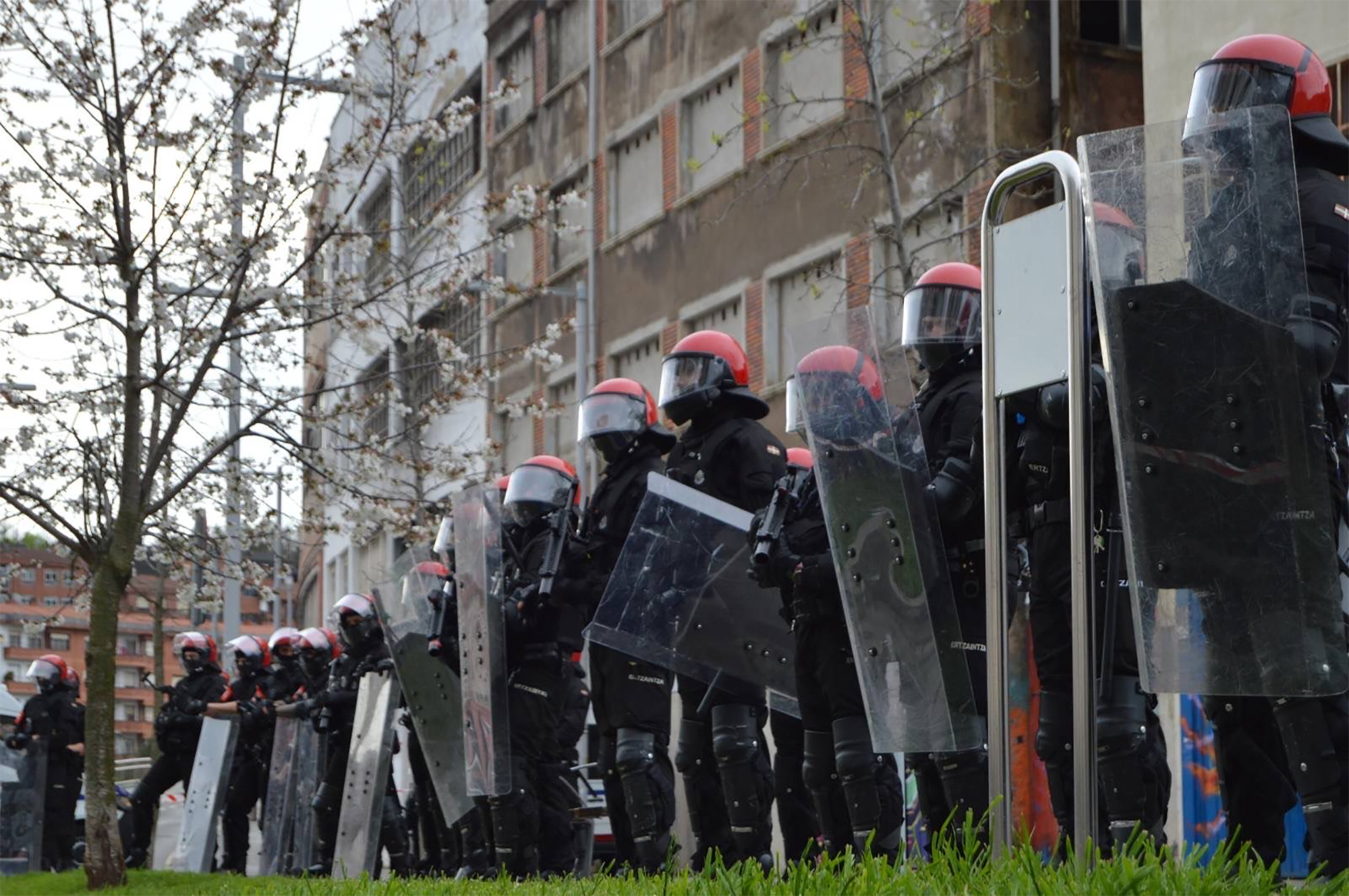

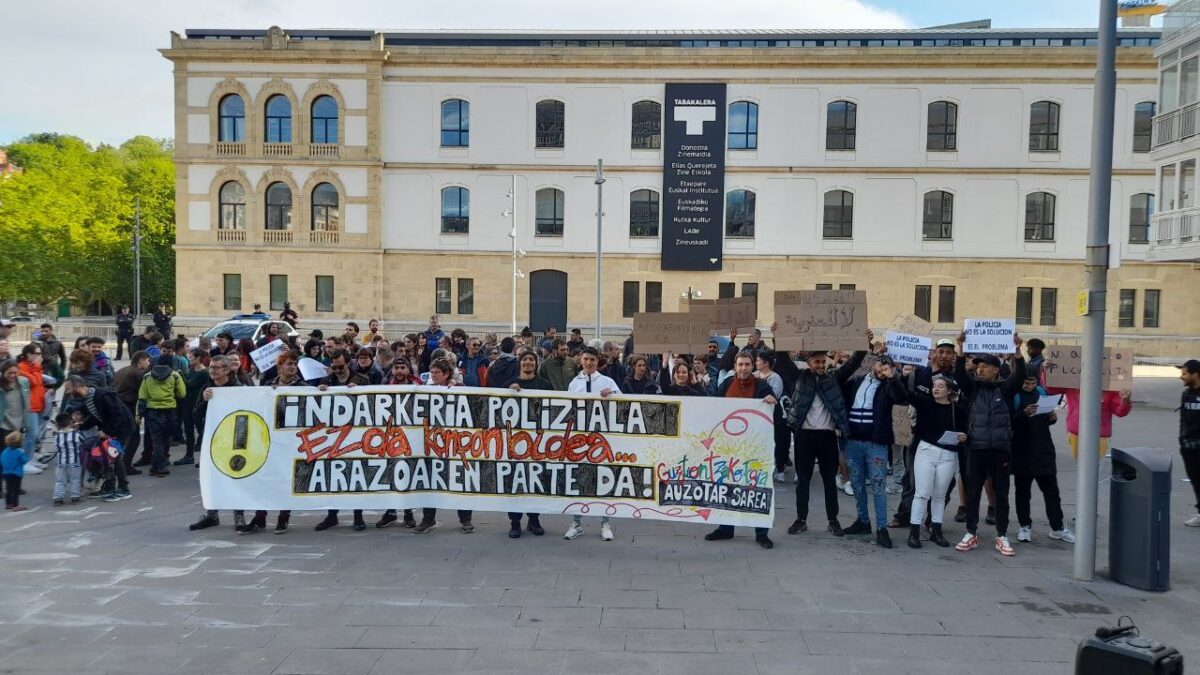
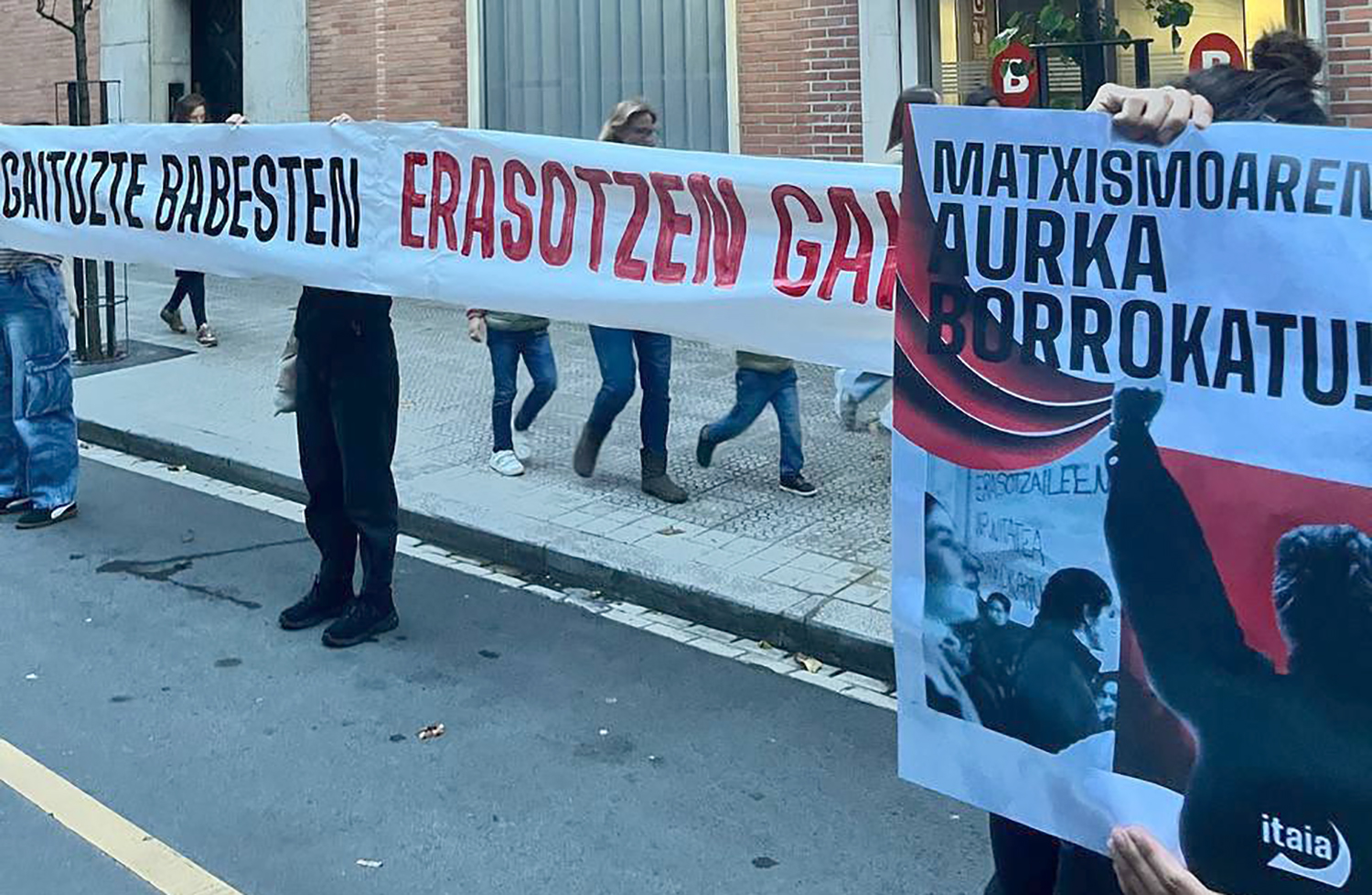
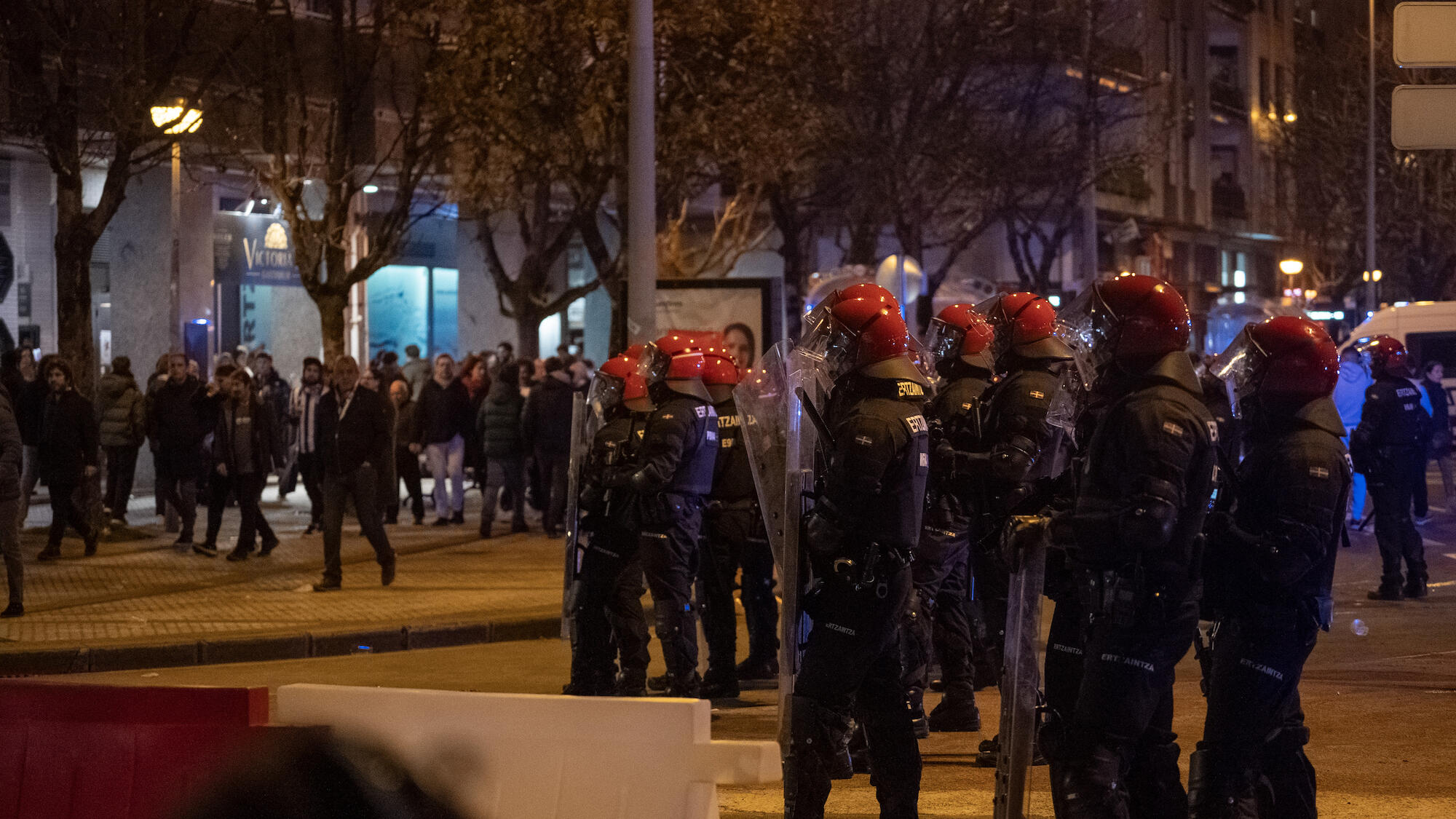
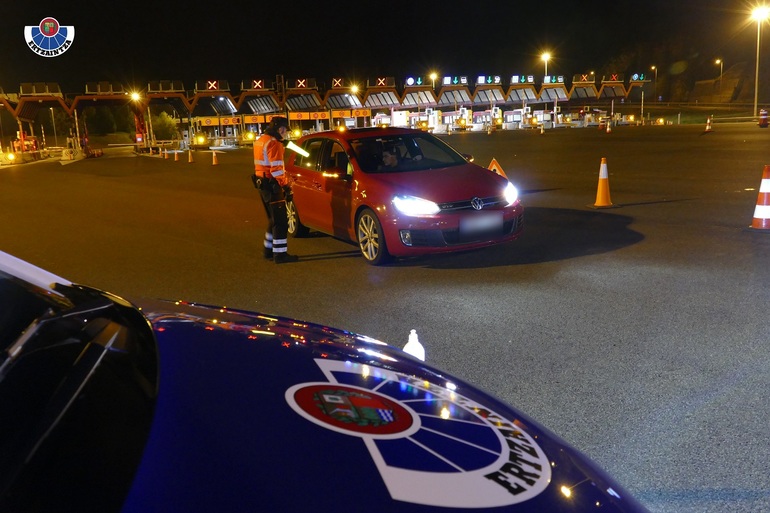
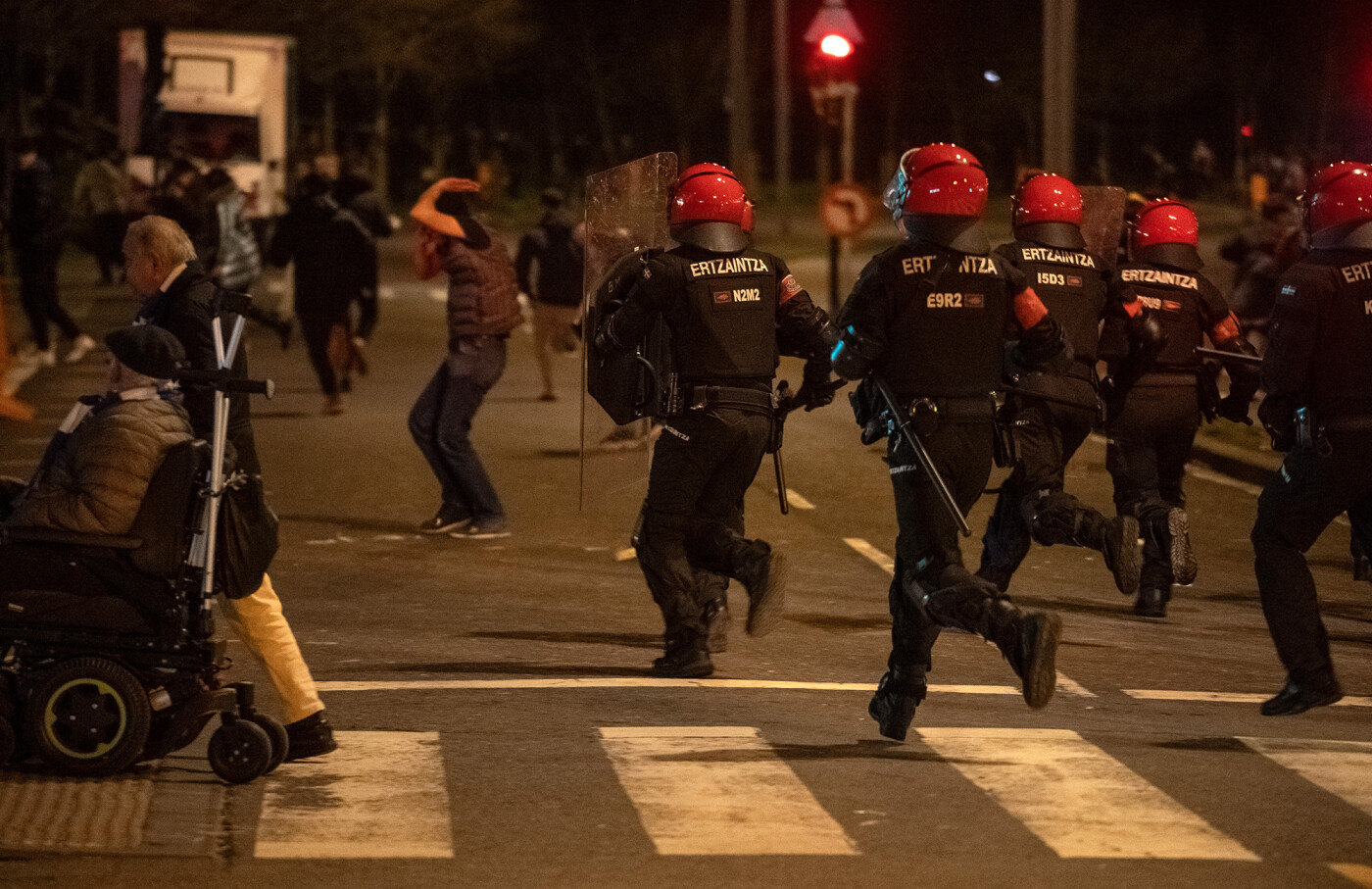
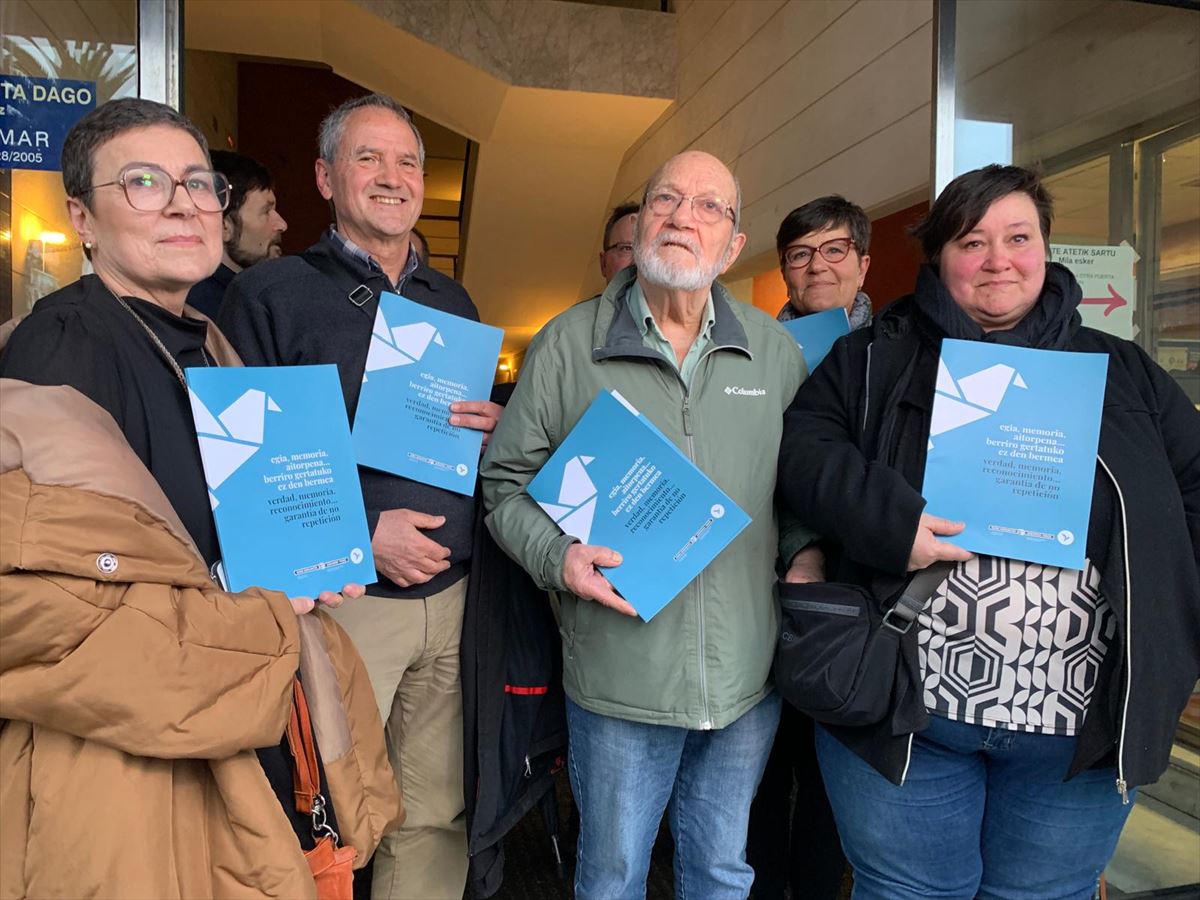

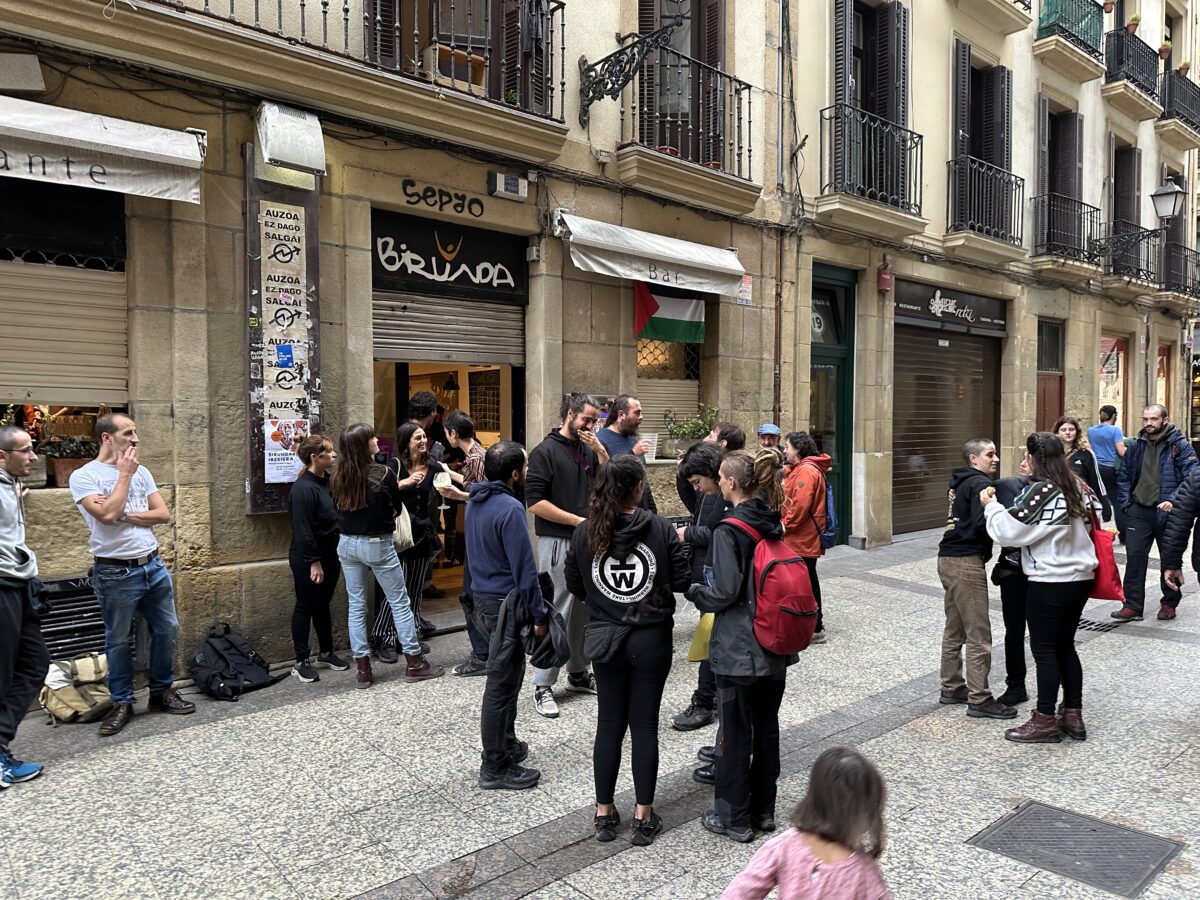

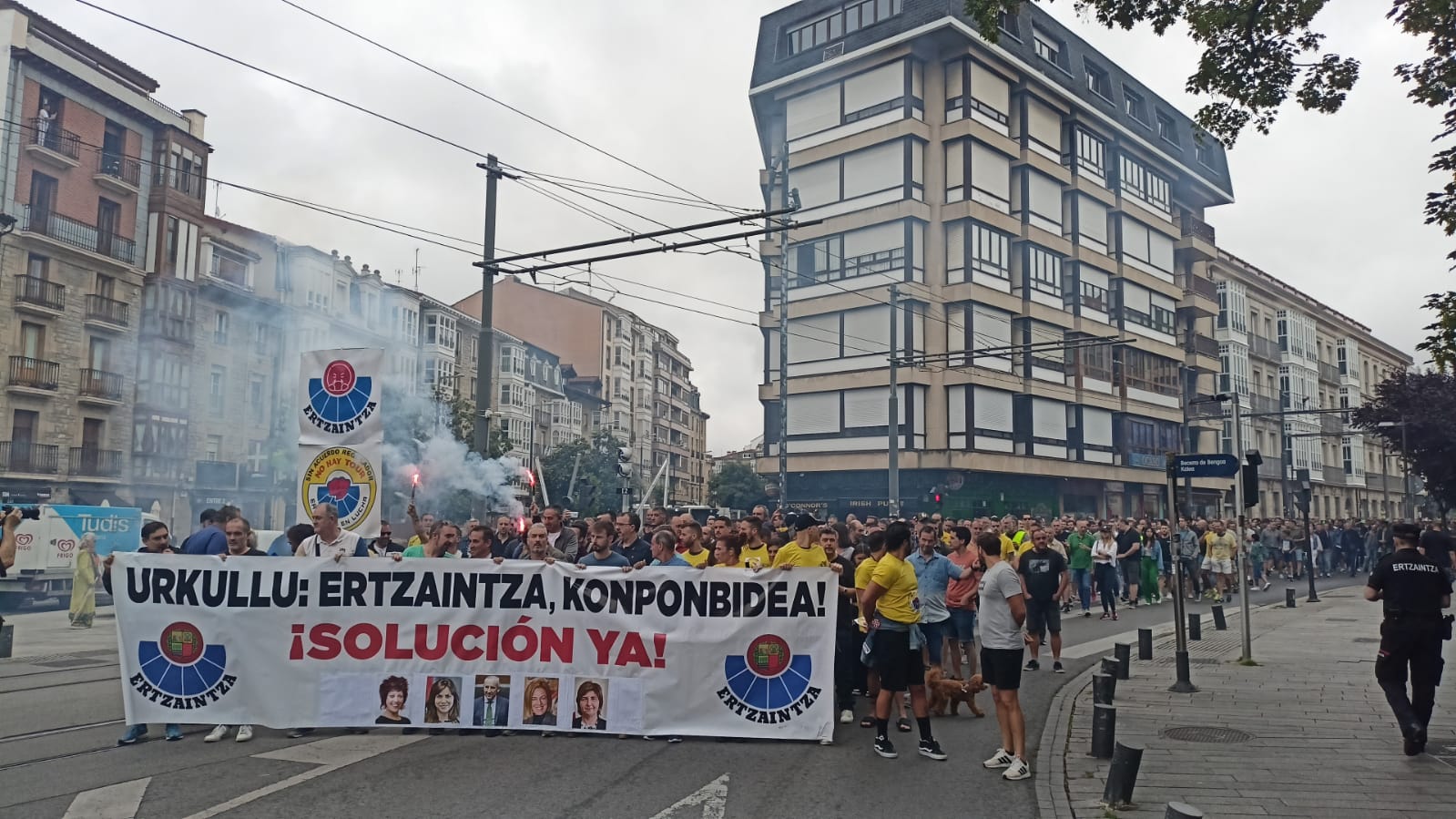
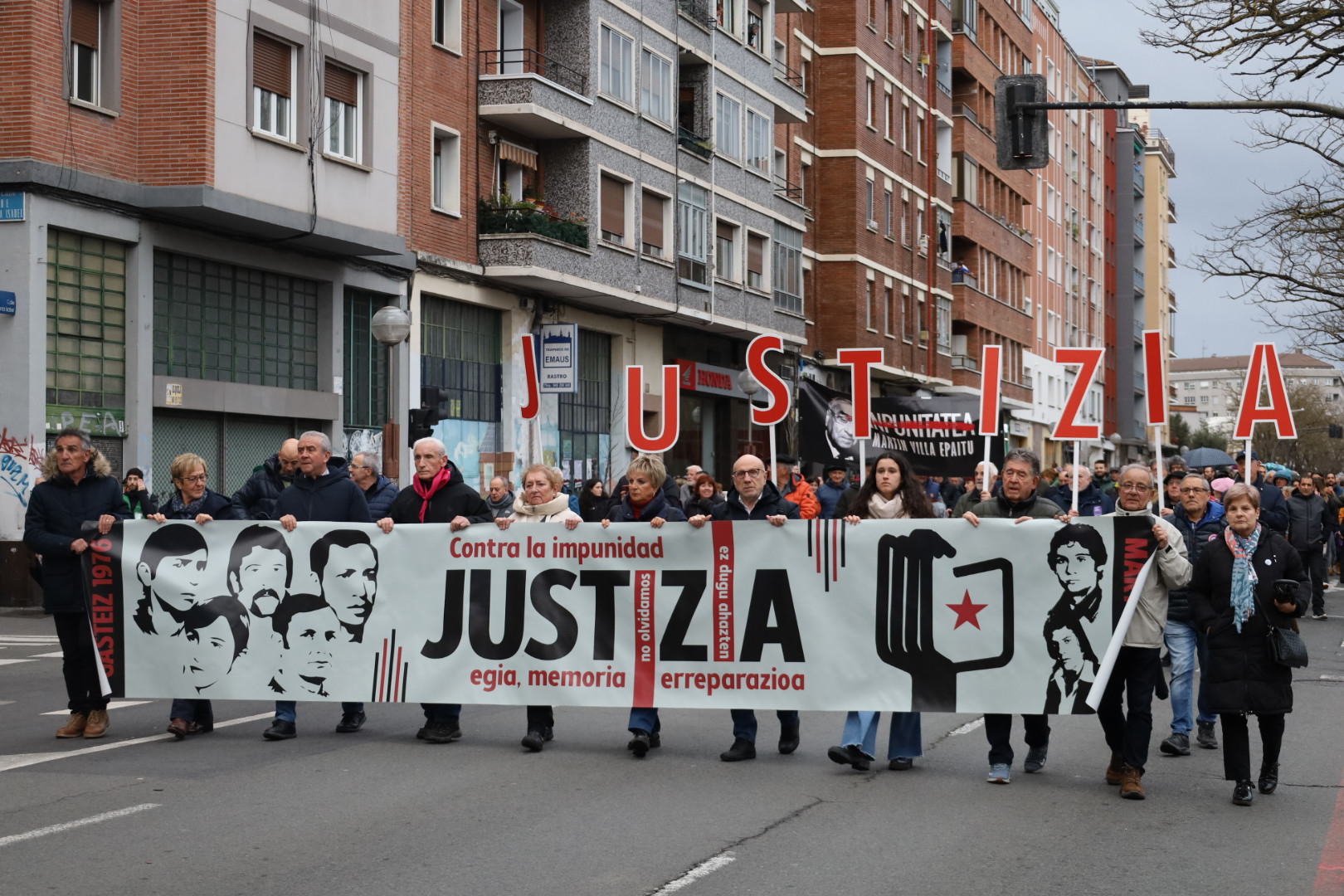
.jpg)
.jpg)